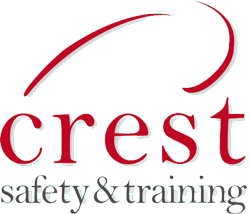The introduction of the new WHS legislation hoped to achieve:
- Harmonisation – a nationally consistent approach
- Modernisation – update health and safety legislation to reflect modern day working arrangement, issues and conditions.
Harmonisation
The process of harmonisation has not been entirely successful. Victoria has chosen not to adopt the model WHS laws and instead has reviewed its existing OHS legislation.
States and Territories have adopted different versions of the model legislation. Additionally, jurisdictions may have chosen to adopt or not adopt particular sections within the model laws. Where a section has not been adopted it will appear as “not used” or “deleted”. Where a section has been added it will appear with a letter after the section number. For example, in WA’s WHS Act section 26A describes the duties of WHS Service Providers.
For a comparison of the different states and territories see Safe Work Australia’s web site at: https://www.safeworkaustralia.gov.au/resources-and-publications/model-codes-practice/model-whs-act-cross-comparison-table
Modernisation
The term modernisation has been used in WA to describe the process of introducing WHS legislation that is suitable for current working life.
So why the change? When the original OSH Act was enacted in 1984 working life was vastly different than it is today. Whilst the OSH Act is periodically reviewed and updated, there are still some considerable changes in the new Act, made to ensure it is up to date.
Increase in small business
Since the OSH Act was adopted in 1984 there has been a steady increase in small business.
2019 data from the Australian Bureau of Statistics show that the majority of Australian businesses (62%) are sole traders with no employees. Micro business (1-4 employees) account for 27% and small businesses (5-19 employees), 8.5%.
Change in work organisation
In addition to the increase in small business in recent years we have seen a shift in the nature of employment arrangements.
The OSH Act describes the traditional duties of employers and employees. In 2004 the OSH Act was modified to include provisions for labour hire arrangements. This was to ensure that people working under new and different working arrangements were covered by the legislation.
Today we see many different types of working arrangements such as franchising, freelancing, teleworking and the gig economy (Uber, Air Tasker etc).
Change in the type of work being undertaken
Not only has there been a shift in the work arrangements but the type of work being undertaken has also changed. Consider the following statistics from the Australia Bureau of Statistics: “In 1966, 46% of all employed people in Australia worked in production industries: on the land or sea, down mines, in the factories or on building sites. Now, 30 years later, that proportion has diminished to 28%”
Manufacturing industries have seen a steady decline since the 1970’s. According to the Australian Bureau of Statistics this has been a decrease in the 1970’s from 25% to 5.4%.
Generally, there has been a move in employment from blue collar type work to white collar type work.
Change in the nature of workplace hazards
The change in the type of work being undertaken results in a corresponding change in the nature of risk. As more people become employed in service industries there has been an increased focus on psychosocial hazards and musculoskeletal disorders.
